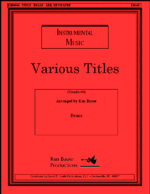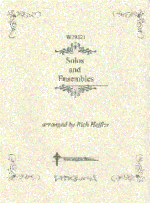-
-
-
-
-
-
-
-
-
Faith in God Medley(His Eye Is on the Sparrow; When We All Get to Heaven)
$13.003 flutes and rhythm section
-
-
-
-
-
-
My Faith Looks Up To Thee
$4.95Even though this arrangement is written well within the range of the novice player, it is also crafted to be expressive and beautiful. Both the trumpet and piano are featured as soloist.
-
Hymn To Joy (Joyful, Joyful, We Adore Thee)
$11.95Some variations on Beethoven’s tune from the Ninth Symphony
-
-
-
-
-
-
-
-



